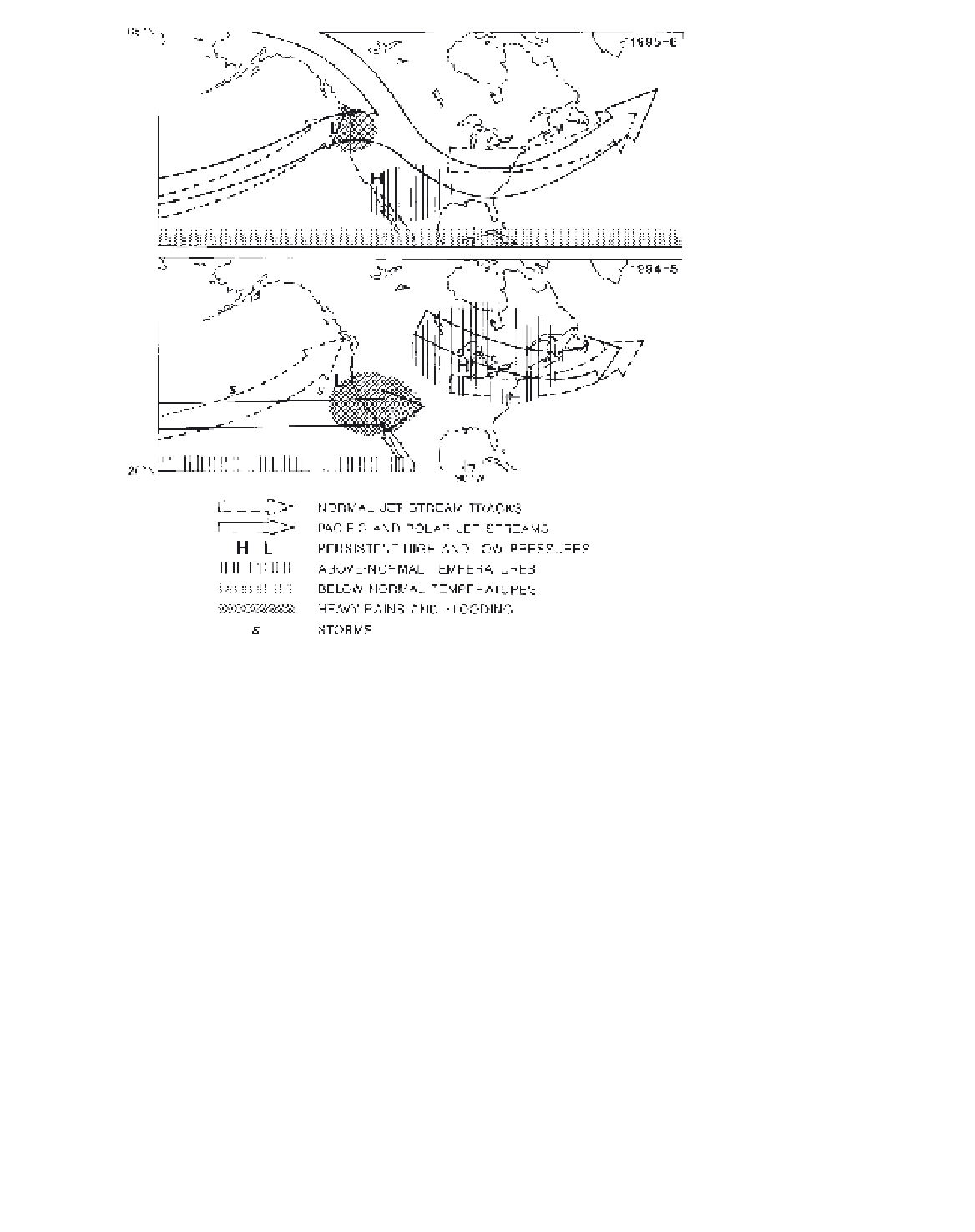Geoscience Reference
In-Depth Information
Figure 10.13
Jet streams, pressure dis-
tribution and climate for North America
during the winters of 1995 to 1996 and
1994 to 1995.
Source
: US Department of Commerce,
Climate Prediction Center. Courtesy of US
Department of Commerce.
since the Arctic frontal zone is over northwest Canada
in winter. This frontal zone involves much-modified mA
air from the Gulf of Alaska and cold dry cA (or cP) air.
Cyclones of the third group form along the main polar
frontal zone, which in winter is off the east coast of
the United States, and move northeastward towards
Newfoundland. Sometimes, this frontal zone is present
over the continent at about 35°N with mT air from
the Gulf and cP air from the north or modified mP
air from the Pacific. Polar front depressions forming
over Colorado move northeastward towards the Great
Lakes; others developing over Texas follow a roughly
parallel path, further to the south and east, towards
New England. Anomalies in winter climate over North
America are influenced strongly by the position of the
jet streams and the movement of associated storm
systems. Figure 10.13 illustrates their role in locating
areas of heavy rain, flooding and positive/negative
temperature departures in the winters of 1994 to 1995
and 1995 to 1996.
Between the Arctic and polar fronts, Canadian
meteorologists distinguish a third frontal zone. This
maritime (Arctic) frontal zone is present when mA and
mP airmasses interact along their common boundary.
The three-front (i.e. four airmass) model allows a
detailed analysis to be made of the baroclinic structure
of depressions over the North American continent using
synoptic weather maps and cross-sections of the atmos-
phere. Figure 10.14 illustrates the three frontal zones
and associated depressions on 29 May 1963. Along
95°W, from 60° to 40°N, the dew-point temperatures
reported in the four airmasses were -8°C, 1°C, 4°C and
13°C, respectively.
In summer, east coast depressions are less frequent
and the tracks across the continent are displaced
northward, with the main ones moving over Hudson
Bay and Labrador-Ungava, or along the line of the St
Lawrence. These are associated mainly with a poorly
defined maritime frontal zone. The Arctic front is
usually located along the north coast of Alaska, where
there is a strong temperature gradient between the bare
land and the cold Arctic Ocean and pack-ice. East from
here, the front is very variable in location from day to
day and year to year. It occurs most often in the vicinity

